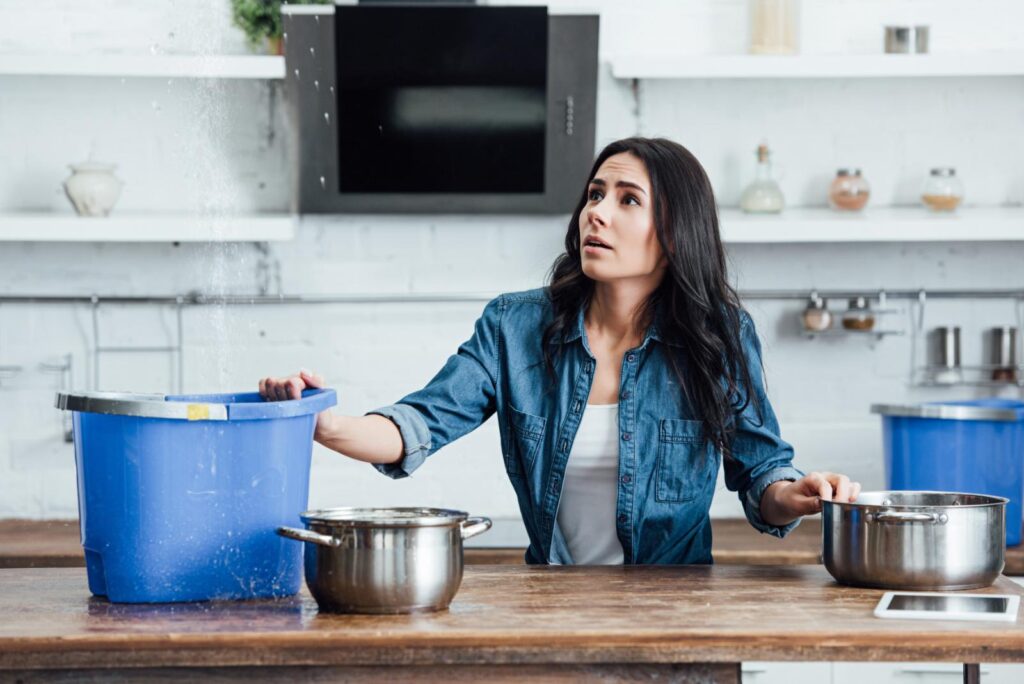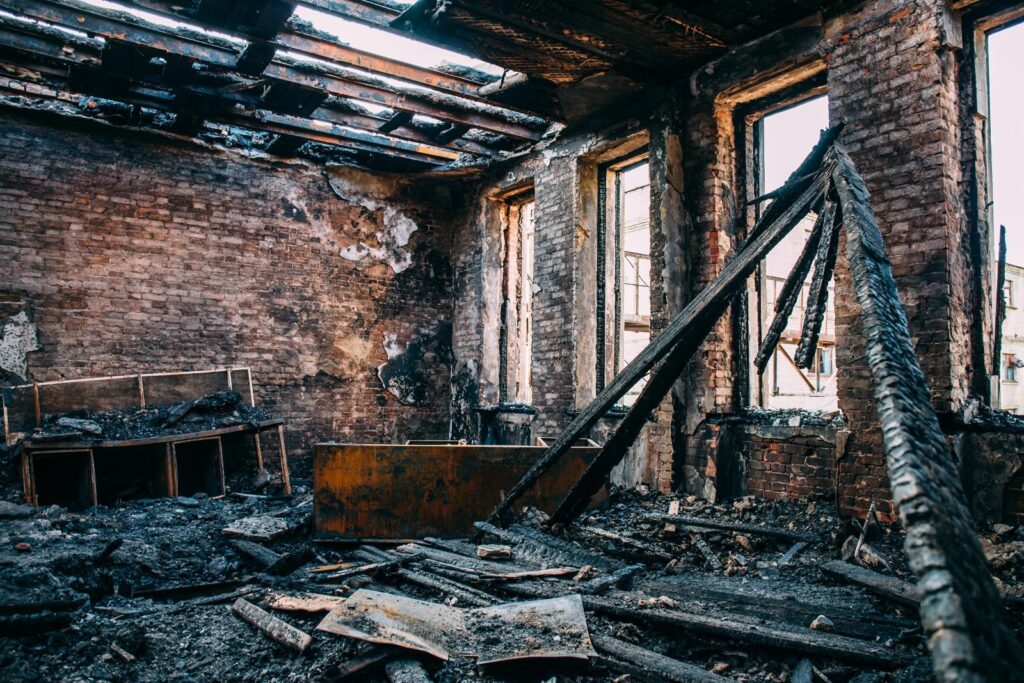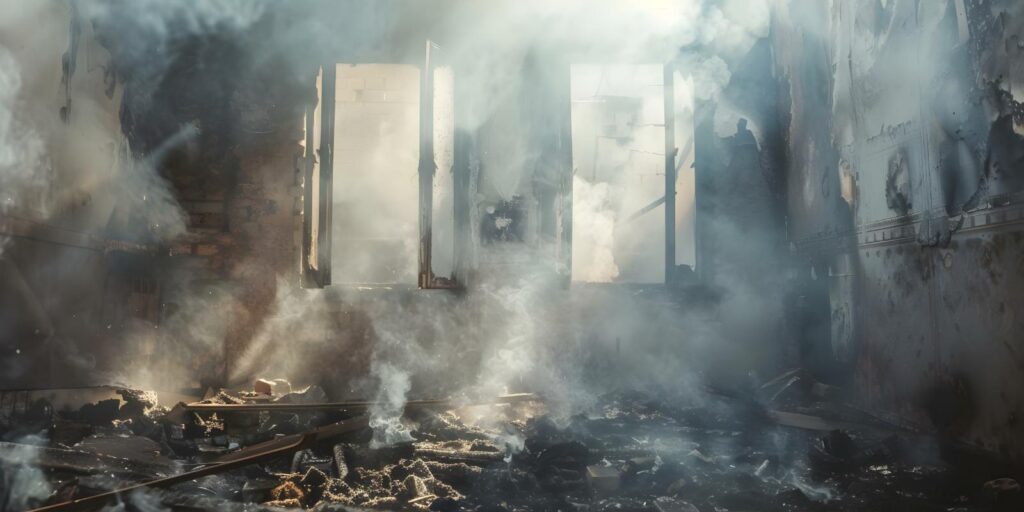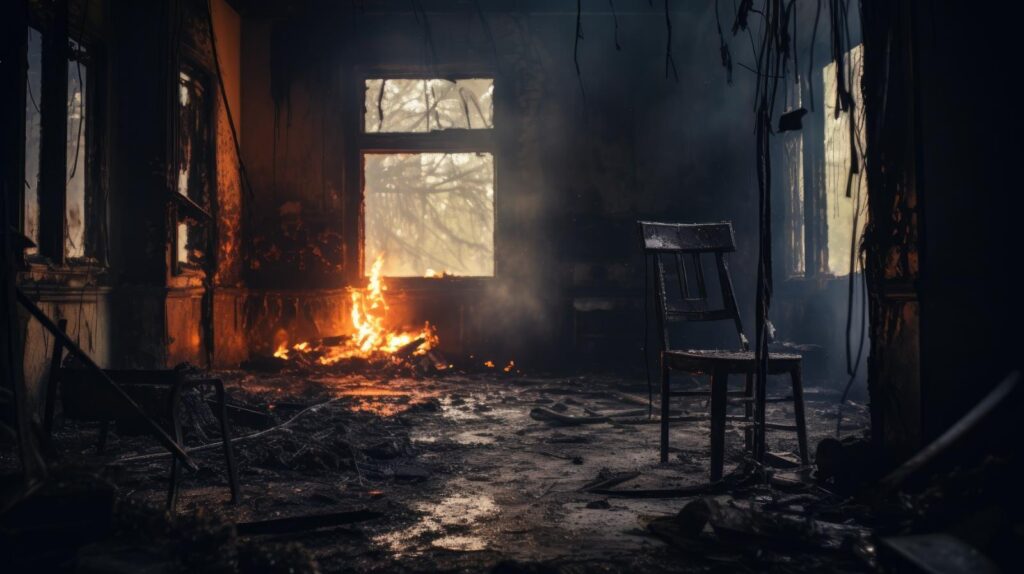
Contents
When your neighbor’s basement flooded last summer, they faced an uphill battle with mold taking over within days. You might think mold removal is straightforward, but the process involves several critical steps to ensure you’re not just masking the problem. From assessing the initial water damage to implementing proper safety precautions, each phase plays a vital role in successful remediation. Understanding these steps could mean the difference between a healthy living environment and a persistent mold issue that returns. So, what should you know before tackling this challenging task?
Key Takeaways
- Identify the water source and assess damage using moisture meters to determine the extent of mold risk.
- Wear appropriate personal protective equipment (PPE) and ensure proper ventilation during mold removal.
- Contain affected areas with plastic sheeting and use HEPA filters to capture airborne mold spores.
- Clean and disinfect surfaces with EPA-approved solutions, allowing disinfectants to sit for at least 10 minutes.
- Maintain indoor humidity levels below 50% post-removal to prevent future mold growth.
Assessing Water Damage
After a flood, assessing water damage is crucial for effective mold removal. The first step in this process is water source identification. You need to determine whether the water came from a clean source, such as rainwater, or a contaminated source, like sewage. This distinction significantly influences your approach to mold remediation. Contaminated water often carries pathogens, necessitating more stringent safety measures during cleanup.
Next, implement damage evaluation techniques to assess the extent of the water intrusion. Use moisture meters to identify hidden damp areas behind walls and under flooring, as even minor moisture can lead to significant mold growth. Document all findings meticulously; photographs and written notes will help you track progress and communicate effectively with any professional teams involved.
Pay attention to materials affected by water. Porous materials like drywall, insulation, and carpeting may absorb water, leading to mold proliferation. Non-porous surfaces, however, can often be cleaned and salvaged. By categorizing materials based on their water exposure and potential for mold, you can prioritize your restoration efforts.
Incorporate a systematic approach, combining visual inspections with moisture detection tools, to ensure no hidden damage is overlooked.
Identifying Mold Growth
Although mold can begin to grow within 24 to 48 hours after water exposure, identifying its presence requires a keen eye and systematic evaluation. Start by examining areas prone to moisture, such as basements, bathrooms, and around windows. Look for visible signs, like dark spots or fuzzy growths, which may indicate various mold types, including Aspergillus, Cladosporium, or Stachybotrys. Each type has distinct characteristics and may pose different health risks.
Next, assess the growth conditions. Mold thrives in environments with high humidity levels, typically exceeding 60%, and organic materials such as wood, drywall, or carpet. Use a hygrometer to measure humidity and ensure it’s within a safe range. If you notice peeling paint, warping surfaces, or a musty odor, these could be indicators of hidden mold growth.
Pay attention to air quality too. If you experience increased allergy symptoms, respiratory issues, or persistent headaches while in your home, it might signal mold presence.
Additionally, check less visible areas, such as behind appliances or inside HVAC systems. These spaces often create ideal growth conditions due to overlooked moisture accumulation. If you suspect mold but can’t see it, consider conducting a home inspection or consulting professionals.
Safety Precautions
When dealing with mold removal after flooding, it’s crucial to prioritize safety precautions to protect yourself and others from potential exposure to harmful spores. Mold can significantly impact health, leading to respiratory issues, allergic reactions, and other serious health problems.
To mitigate these risks, start by assessing your environment. Ensure the area is well-ventilated; open windows and use fans to enhance air quality.
Next, wear personal protective equipment (PPE). A NIOSH-approved respirator with a P100 filter is essential, as it effectively filters out mold spores. Additionally, use gloves and goggles to protect your skin and eyes from irritants. Consider wearing disposable coveralls to prevent mold from contaminating your clothing.
Before you begin the removal process, keep in mind that mold can spread easily. To minimize cross-contamination, seal off affected areas using plastic sheeting and tape. Turn off HVAC systems to prevent spores from circulating throughout your home.
Finally, stay alert for signs of mold-related health issues among yourself and those nearby. Symptoms such as coughing, sneezing, or skin irritation should prompt immediate action, including seeking professional help if necessary.
Gathering Necessary Supplies
Before you begin mold removal, you need to gather essential tools, protective gear, and effective cleaning solutions.
Having the right equipment, such as brushes, spray bottles, and vacuum systems, is crucial for thorough mold eradication.
Additionally, wearing appropriate protective gear, including respirators and gloves, ensures your safety while using various cleaning agents that can be hazardous.
Essential Tools Required
Successful mold removal after flooding hinges on having the right tools at your disposal. To effectively tackle this issue, you’ll need a few essential items.
Start with a high-efficiency particulate air (HEPA) vacuum. This tool is crucial for removing mold spores from surfaces without spreading them further into the air. Next, invest in specialized mold removal solutions containing fungicides; these are effective in killing mold on contact.
You’ll also require moisture meters to assess the dampness levels in materials, guiding your drying efforts. Additionally, air quality testing kits can help you monitor the environment post-remediation, ensuring that mold prevention strategies are successful.
Don’t overlook the importance of fans and dehumidifiers; they play a vital role in reducing humidity, which is key to preventing mold regrowth.
Lastly, gather cleaning brushes, scrub pads, and buckets—these will assist in the physical removal of mold.
By equipping yourself with these tools, you’ll not only enhance your mold removal efforts but also contribute to creating a healthier living space for you and your loved ones.
Protective Gear Importance
The importance of protective gear during mold removal can’t be overstated, as it safeguards your health while tackling hazardous spores. When engaging in mold remediation, using appropriate protective equipment is crucial to mitigate potential health risks. Mold spores can trigger respiratory issues, allergic reactions, and even long-term health complications. Therefore, wearing the right gear creates a barrier between you and these dangers.
Start by donning N95 respirators, which filter out at least 95% of airborne particles. Ensure your respirator fits snugly to maximize protection.
Next, invest in waterproof gloves, preferably made from nitrile, as they resist punctures and chemicals. Eye protection is also essential; goggles that provide a tight seal can prevent spores from entering your eyes.
Additionally, consider wearing disposable coveralls to shield your skin from mold exposure. This not only protects you but also prevents cross-contamination to other areas.
Remember, the more layers of protective equipment you wear, the better you’ll shield yourself from health risks. Prioritizing your safety fosters a sense of community responsibility, making you an essential part of the mold removal process.
Stay safe, and ensure you’re fully equipped before tackling mold cleanup.
Cleaning Solutions Overview
Wearing protective gear sets the stage for the next critical step in mold remediation: gathering effective cleaning solutions.
You’ll want to focus on both commercial products and eco-friendly solutions that can combat mold effectively while minimizing environmental impact.
Start by exploring commercial mold removers, which often contain potent antifungal agents like hydrogen peroxide or quaternary ammonium compounds.
These solutions can quickly eliminate mold spores, but ensure you read the labels for safety and application guidelines.
If you prefer a more sustainable approach, consider homemade cleaners. A mixture of vinegar and water is a popular choice; vinegar has natural antifungal properties and can penetrate porous surfaces.
Alternatively, you can create a baking soda solution, which not only cleans but also deodorizes affected areas.
As you gather these supplies, remember to include tools like scrub brushes, spray bottles, and sponges, which enhance your cleaning efficiency.
The right combination of commercial products and homemade cleaners will empower you to tackle mold infestations effectively, fostering a healthier living environment for you and your loved ones.
Containing the Affected Area
Although mold can spread rapidly after flooding, containing the affected area is crucial to prevent further contamination. Implementing effective mold containment techniques can significantly minimize exposure to spores and protect unaffected areas of your home. Here’s how you can do it:
Seal Off the Area: Use plastic sheeting to create barriers, sealing off doors, windows, and vents to restrict airflow. This stops spores from traveling to other rooms.
Utilize Air Filtration Systems****: Invest in high-efficiency particulate air (HEPA) filters that capture airborne mold spores. Place these systems in and around the affected area to maintain air quality and reduce spore spread.
Control Humidity: Maintain humidity levels below 50% using dehumidifiers. This not only aids in mold containment but also discourages mold growth in other areas.
Following these steps allows you to effectively manage mold contamination and creates a safer environment for you and your loved ones.
Always wear personal protective equipment (PPE) like masks and gloves during this process to minimize health risks.
Remember, acting promptly can make a significant difference in preventing a larger mold infestation. By taking these steps, you not only protect your home but also foster a sense of belonging and safety within your space.
Addressing mold issues comprehensively and proactively is essential for ensuring a healthy living environment for you and your family.
Removing Contaminated Materials
Removing contaminated materials is a critical step in addressing mold issues after flooding. When you’re dealing with water-damaged items, it’s essential to act quickly and use effective removal techniques.
Start by identifying materials that are porous and have absorbed water, such as drywall, carpets, and insulation. These items can harbor mold spores, making them difficult to salvage.
For non-porous materials like glass or metal, a thorough cleaning might suffice, but it’s best to consult guidelines from health authorities to ensure thoroughness. Use protective gear, including gloves and masks, to minimize health risks during the removal process.
Disposal methods play a crucial role in preventing mold spread. Place contaminated materials in heavy-duty plastic bags, sealing them tightly before disposal to contain any spores. Local regulations often dictate specific disposal methods, so check with your waste management facility to ensure compliance.
Consider documenting the removed materials for insurance purposes, providing evidence of the damage sustained.
Always prioritize safety; if items are heavily contaminated or you feel uncertain about the removal process, hiring a professional mold remediation service may be the best option.
Cleaning and Disinfecting
Cleaning and disinfecting surfaces after flooding is essential to prevent mold growth and ensure a safe environment. Mold can thrive on damp surfaces, so you need to act quickly. By employing effective cleaning techniques and disinfecting methods, you can safeguard your home and health.
Here are three key steps to follow:
Initial Cleaning: Start by removing any visible dirt and debris. Use a mixture of water and a mild detergent to scrub surfaces. Pay special attention to corners and crevices where moisture may linger.
Disinfecting: After cleaning, move on to disinfecting. Use an EPA-approved disinfectant or a homemade solution of 1 cup of bleach per gallon of water. Apply the solution generously to all surfaces that may have come into contact with floodwaters. Allow it to sit for at least 10 minutes to ensure effectiveness.
Rinse and Dry: Finally, rinse surfaces with clean water to remove any residual disinfectant. Thoroughly dry the area using fans or ventilation to prevent moisture accumulation and discourage mold growth.
Drying and Dehumidifying
Effective drying and dehumidifying are crucial steps in preventing mold growth after flooding, as moisture can linger in hidden areas and exacerbate the problem. To effectively manage this, you need a systematic approach that combines air circulation techniques and moisture control methods.
Begin by removing any standing water using pumps or wet vacuums. Once you’ve cleared the bulk of the water, enhance air circulation throughout the affected area. Open windows and doors to create cross-ventilation, and utilize fans to increase airflow. Position fans strategically to direct air toward damp surfaces, ensuring that every corner of the room receives adequate attention. This will help evaporate moisture more rapidly.
Next, invest in dehumidifiers to extract moisture from the air. A dehumidifier can significantly reduce humidity levels, which is vital because mold thrives in environments with high humidity. Monitor the humidity using a hygrometer, aiming to keep levels below 50%. When using dehumidifiers, ensure they’re emptied regularly and placed in the most affected areas to maximize efficiency.
It’s essential to combine these methods for optimal results. For instance, using air circulation techniques alongside dehumidifiers can expedite the drying process, preventing moisture from settling in hidden crevices.
Preventing Future Mold
Although moisture management is critical during the initial recovery phase, ongoing prevention of mold growth requires a comprehensive strategy that addresses potential vulnerabilities in your home.
To effectively reduce the risk of future mold infestations, you should implement these key practices:
Utilize Mold Resistant Materials**: When renovating or repairing your home, opt for mold-resistant materials** such as drywall, insulation, and paint. These products are specifically designed to inhibit mold growth, providing an essential barrier against moisture.
Conduct Regular Inspections****: Make it a habit to inspect areas prone to dampness, like basements, bathrooms, and kitchens. Look for signs of water damage, leaks, or condensation. Regular inspections help you catch potential issues early, allowing for timely interventions.
Control Indoor Humidity Levels**: Aim to maintain indoor humidity levels between 30% and 50%. Use dehumidifiers** in high-moisture areas, and ensure proper ventilation throughout your home.
This not only helps in preventing mold but also contributes to a healthier living environment.
Seeking Professional Help
When you face mold issues after flooding, relying on professional expertise is crucial for effective remediation.
Trained specialists use advanced techniques and equipment to assess the extent of the damage and eliminate mold safely.
Choosing the right service involves evaluating their credentials, experience, and methods to ensure a thorough and lasting solution.
Importance of Expertise
After experiencing flooding, the importance of seeking professional help for mold removal can’t be overstated.
Mold remediation is a complex process that requires an expert assessment to ensure safety and effectiveness. Attempting to handle it on your own can lead to inadequate removal, which may result in health risks and structural damage.
Here are three critical reasons to enlist professionals:
Thorough Assessment: Experts use specialized tools to identify hidden mold and moisture, ensuring a comprehensive evaluation of your property.
Effective Remediation: Professionals apply industry-standard methods to eliminate mold and prevent its return, safeguarding your home and health in the long run.
Safety Precautions: Mold can produce harmful spores. Professionals are trained to handle hazardous materials safely, minimizing the risk of exposure for you and your family.
Choosing the Right Service
Choosing the right mold removal service is crucial to ensuring a safe and effective remediation process. When you’re facing the aftermath of flooding, it’s vital to conduct thorough service comparisons. Start by evaluating the qualifications of potential contractors; they should have certifications in mold remediation and a proven track record.
Look for companies that perform a comprehensive assessment of your property, rather than just a quick inspection.
Next, consider the cost considerations. While it’s tempting to opt for the cheapest option, remember that quality often comes at a price. Obtain detailed estimates from multiple services that outline their methods, equipment, and timeframes. This transparency will help you gauge their expertise and reliability.
Also, seek out customer reviews and testimonials. A reputable service will have positive feedback demonstrating their effectiveness and professionalism. Check for any complaints filed against them, as this can indicate potential issues.
Finally, ensure the service you choose offers a warranty on their work. This shows confidence in their ability to eliminate mold effectively.
Wrap-Up
In conclusion, effectively removing mold after flooding hinges on a systematic approach. By identifying water sources, containing affected areas, and employing EPA-approved disinfectants, you can significantly reduce mold risks. Regular inspections and humidity control are crucial for prevention. Studies show that proactive measures not only mitigate health risks but also save costs associated with extensive repairs. Embracing these practices ensures a healthier living environment, confirming that diligence pays off in the long run.



